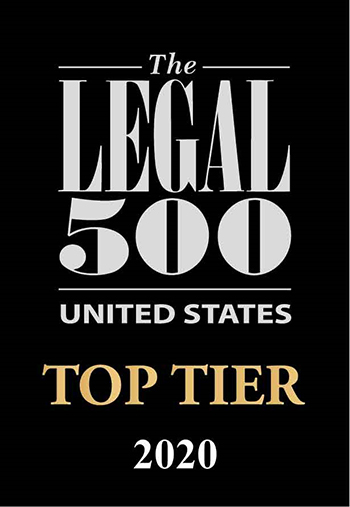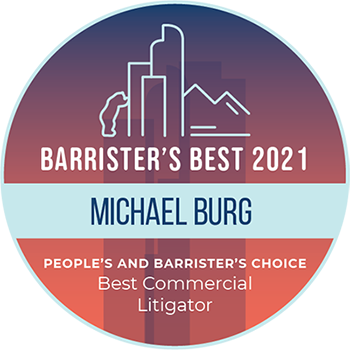Auto Accident Attorneys Serving Clients Nationwide
A car accident is one of the most stressful and traumatic events a person can experience. Statistically, everyone is likely to be in at least one crash in the course of their lives. For this reason, it is important to understand what legal rights you have and how a car accident lawyer can help.
Burg Simpson Law Firm represents clients who have been injured in car accidents in all 50 states. Top reasons to hire a car accident attorney at our firm include:
- $2 billion+ in results. We have obtained billions of dollars in verdicts and settlements for clients in a wide range of personal injury cases. Our lawyers know what it takes to win.
- 45+ years of experience. Burg Simpson was founded in 1976. Since that time, we have built a preeminent reputation as one of the country’s top accident law firms.
- 60+ attorneys. We have offices in multiple states, each staffed by outstanding lawyers who are committed to providing quality legal guidance and support to each client.
- Award-winning representation. Multiple legal organizations have recognized both Burg Simpson as a whole and individual attorneys at our firm as leading advocates for the wrongfully injured.
- Local clout paired with national strength. We are dedicated to the communities we serve. No matter where the accident occurred, you can expect to talk to lawyers with knowledge of the local community and legal system.
Call 888-895-2080 today for a FREE and confidential case evaluation. Our car accident lawyers serve clients nationwide from offices in Colorado, Arizona, Nevada, Ohio, and Wyoming.
Types of Car Accident Cases We Handle
At Burg Simpson, we have seen just about every type of wreck you can imagine. We have an in-depth understanding of what causes car accidents, as well as the toll they take on victims and their families.
If you suffered injury or a member of your family was killed as a result of any of the following, a car accident lawyer at Burg Simpson can help:
- Rear-end collisions
- Side-impact crashes
- Drunk driving accidents
- Rollover accidents
- Single-vehicle crashes
- Uninsured motorist accidents
- Sideswipe crashes
- Head-on collisions
- Multi-car pile ups
- Autonomous vehicle accidents
Some crashes may seem relatively straightforward. If a driver rear-ends you, for example, they would likely be found at fault. Other types of car accidents, however, are more complicated.
A car accident lawyer at Burg Simpson can help you navigate the unique challenges of your case. We are committed to holding all of the parties at fault accountable and obtaining the full amount of compensation you deserve.
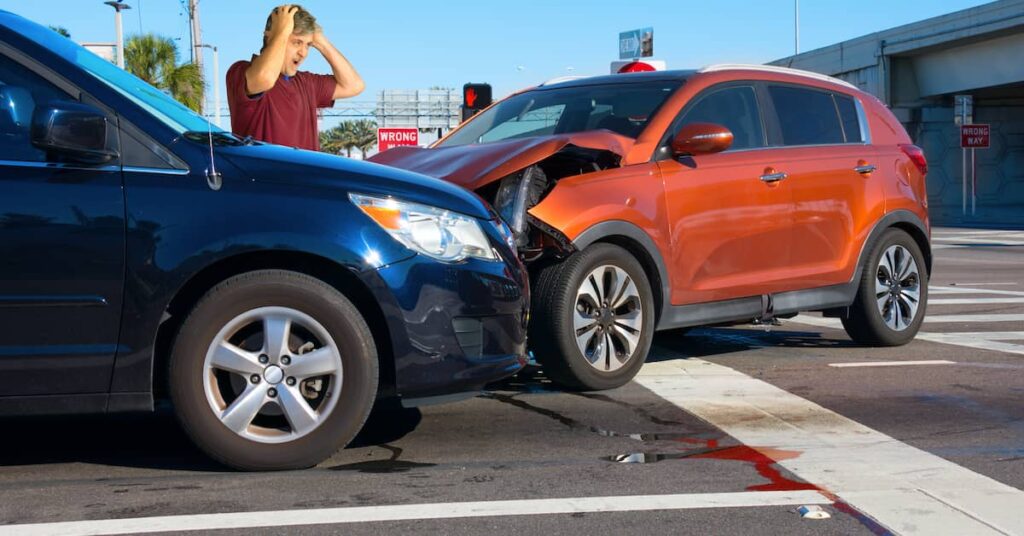
What Causes Car Accidents?
Determining the cause of the accident is crucial for identifying those at fault. Car accident attorneys at Burg Simpson will investigate thoroughly to understand how the crash occurred and what legal options you may have.
Throughout the country, car accidents are often caused by factors such as:
- Careless/reckless driving
- Distracted driving (cell phone usage, texting, etc.)
- Speeding
- Failure to yield
- Drug/alcohol use
- Vehicle defects
- Hazardous weather
- Improper and unsafe lane changes
- Failure to obey traffic signals
- Aggressive driving
- Obstacles in the road
- Defective roadways
Both drivers and passengers alike may have claims for damages after suffering injuries in a car accident. Once the cause is ascertained, our lawyers will review the available insurance coverage. The attorneys at Burg Simpson are consummate negotiators who will act promptly and aggressively to achieve a favorable settlement on your behalf.
Common Injuries in Car Accident Cases
The injuries sustained in a car accident should always be taken seriously. You should seek medical attention right away if you are hurt in a crash.
Car accident lawyers at Burg Simpson represent clients nationwide. Our primary focus is serving those who have sustained catastrophic injuries as a result of negligence. We have helped clients recover full and fair compensation for car accident injuries such as:
- Head and brain injuries
- Trauma to the eyes, nose, mouth, and all of the face
- Whiplash and other neck injuries
- Chest injuries
- Back injuries, including herniated discs, broken vertebrae, etc.
- Spinal cord injuries
- Injuries to the extremities, including broken bones, soft tissue damage, and more
- Burn injuries
- Damage to internal organs
- Internal bleeding
- Amputation injuries
- Psychological and emotional trauma
Tens of thousands of Americans are killed in car accidents each year. Fatalities are tragically common, and it is crucial to understand your rights if a member of your family died in an accident caused by a careless driver.
Surviving family members can pursue compensation for their loss by filing a wrongful death claim. In addition to much-needed money for the loss of your loved one’s income and financial contributions, you and your family may be entitled to recovery of damages for the emotional burdens you are now facing.
Compensation for a Car Accident
As a rule, you should never accept the insurance company’s first settlement offer following a car accident. This is because insurers want to settle your claim for less, and the adjuster will try to pay you as little as possible with the expectation that you do not know what your case is truly worth.
In reality, you may be entitled to substantial compensation. An experienced car accident lawyer will calculate all of the damages you are due and push back against unfair and low-ball settlement offers.
Damages refer to the losses you sustain as a result of personal injury. They encompass both the costs you have incurred to-date, as well as any losses you are expected to face in the future. Compensation that may be recovered in a car accident claim includes:
- The cost of ambulance services and emergency medical care
- Hospitalization expenses
- Surgical fees
- Physical therapy and rehabilitation expenses
- The cost of prescription medications, assistive devices, and travel for medical care
- All lost wages to-date
- Loss of earning capacity, if your ability to work is permanently affected
- The cost of household services and care
- Expenses incurred for home and vehicle modifications
You may also be entitled to non-economic damages. This refers to financial compensation for the adverse effects of the injury on your quality of life, including:
- Physical pain
- Mental and emotional suffering
- Permanent disability
- Scarring and disfigurement
- Embarrassment and shame
- Inconvenience
- Loss of the enjoyment of life
Most states (including Colorado, Arizona, Nevada, Ohio, and Wyoming) require you to bring a fault-based claim for damages against the at-fault driver’s insurance. Several states, meanwhile, employ a no-fault system where compensation for basic economic loss (usually medical expenses and lost wages) is provided through a driver’s own insurance. Whether or not you have the option to file a lawsuit in your state can be determined by a knowledgeable car accident lawyer.
Contact a Car Accident Attorney Today
Is There a Cap on Damages?
Some states do impose damages caps on what people can recover for injuries sustained as a result of a car accident or other events caused by negligence. Usually, the cap is imposed on non-economic damages (i.e., pain and suffering).
In a car accident or other personal injury matter, these states generally cap non-economic damages as follows:
- Alaska:
- $400,000
- Colorado:
- $1.5 million
- Hawaii:
- $375,000
- Idaho:
- $250,000 (subject to changes in the state’s average annual wage)
- Kansas:
- $350,000
- Maryland:
- $650,000 (increased by $15,000 yearly)
- Mississippi:
- $1 million
- Ohio:
- $250,000 or three times the value of economic damages—whichever is greater
- Oregon:
- $500,000
- Non-economic damages may not be awarded if the defendant motorist was uninsured or driving while intoxicated at the time of the accident
- Tennessee:
- $750,000 (raised to $1 million in the event of catastrophic injury)
States with mandatory no-fault insurance may require that the claimant suffer serious injury before they can make a claim for non-economic damages. A car accident attorney with knowledge of your state’s laws can help you determine what limitations may be placed on your recovery.
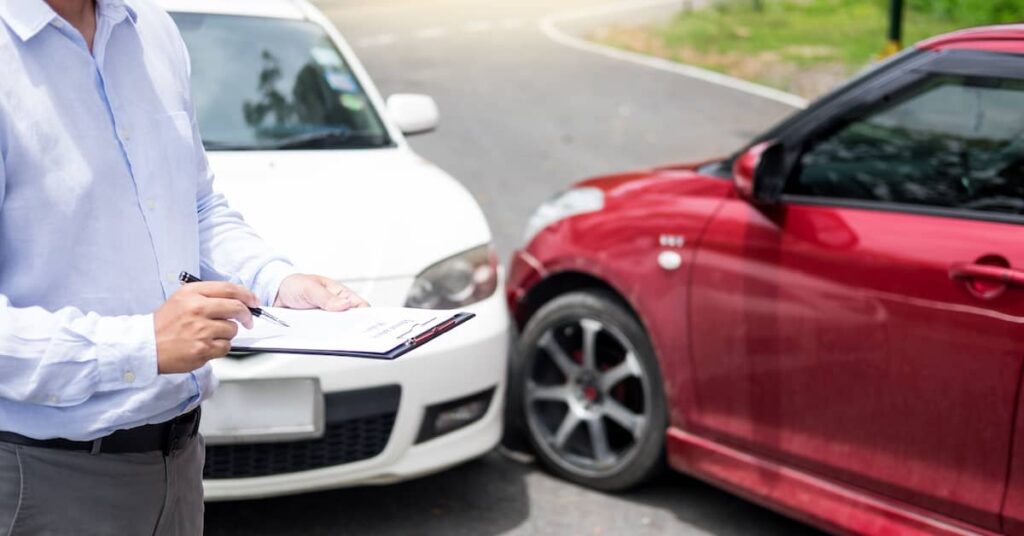
What About Punitive Damages?
Punitive or exemplary damages are a separate legal remedy from economic and non-economic damages. Instead of compensating victims and their families for injuries, the purpose of punitive damages is to punish a defendant for reckless, fraudulent, malicious, and similarly egregious conduct.
Qualifying for punitive damages generally requires the plaintiff to meet a higher burden of proof than simply showing that the defendant was careless or negligent. In addition, a number of states cap punitive damages or do not allow them at all:
- Alabama:
- $500,000 or three times the value of compensatory damages—whichever is greater
- Alaska:
- $500,000 or three times the value of compensatory damages—whichever is greater
- Colorado:
- Punitive damages may not exceed the compensatory damages awarded to the plaintiff
- Idaho:
- $250,000 or three times the value of compensatory damages—whichever is greater
- Indiana:
- $50,000 or three times the value of compensatory damages—whichever is greater
- Kansas:
- Punitive damages may not exceed whichever is the lesser between (a) the “annual gross income earned by the defendant” over the preceding 5 years, or (b) $5 million
- Louisiana:
- Punitive damages prohibited except in certain circumstances (ex: a drunk driving accident where the “wanton or reckless disregard for the rights and safety of others” was a factor)
- Massachusetts:
- Not available unless specified by statute (ex: punitive damages of $5,000 or more may be awarded if a “willful, wanton or reckless act” results in the wrongful death of another)
- Michigan:
- Only recoverable when authorized by statute
- Mississippi:
- Amount of punitive damages determined by defendant’s net worth
- Missouri:
- $500,000 or five times the net award to the plaintiff—whichever is greater
- Montana:
- $10 million or 3% of the defendant’s net worth—whichever is less
- Nebraska:
- Not permitted
- Nevada:
- $300,000 or, if the plaintiff is awarded $100,000 or more in compensatory damages, three times the compensatory damages award
- New Hampshire:
- Not permitted, unless stated otherwise by statute
- New Jersey:
- $350,000 or five times the compensatory damages award—whichever is greater
- North Carolina:
- $250,000 or three times the awarded compensatory damages—whichever is greater
- North Dakota:
- $250,000 or two times the value of compensatory damages—whichever is greater
- Ohio:
- Two times the award for compensatory damages, or $350,000 if the defendant is an individual or “small employer”
- Oklahoma:
- $100,000 or equal to the amount of compensatory damages—whichever is greater
- South Carolina:
- $500,000 or three times the value of compensatory damages—whichever is greater
- Tennessee:
- $500,000 or two times the compensatory damages award—whichever is greater
- Texas:
- $200,000 or two times the economic damages plus an “amount equal to any noneconomic damages” (capped at $750,000)—whichever is greater
- Virginia:
- $350,000
- Washington:
- Not permitted, except by statute
- Wisconsin:
- $200,000 or two times the awarded compensatory damages—whichever is greater
Although punitive damages awards are rare (and they may not be available in your state), it is still important to discuss your right to compensation with a car accident lawyer. You deserve justice for extreme wrongdoing on the part of a motorist or other defendant who causes an accident, and punitive damages can provide you with additional financial support.
How Long Do I Have to Make a Car Accident Claim?
The statute of limitations is the law that governs how long you have to pursue damages for losses sustained from a car accident. Each state has a different time limit for making a car accident claim. It is of the utmost importance to speak to a car accident lawyer promptly so your rights can be maintained.
A knowledgeable attorney at Burg Simpson can advise you how long you have to make a claim and whether it will be necessary to file a car accident lawsuit. The statute of limitations by state for personal injury in a car accident is:
- 1 Year
- Kentucky
- Louisiana
- Tennessee
- 2 Years
- Alabama
- Alaska
- Arizona
- California
- Connecticut
- Delaware
- Georgia
- Hawaii
- Idaho
- Illinois
- Indiana
- Iowa
- Kansas
- Minnesota
- Nevada
- New Jersey
- Ohio
- Oklahoma
- Oregon
- Pennsylvania
- Texas
- Virginia
- West Virginia
- 3 Years
- Arkansas
- Colorado
- Maryland
- Massachusetts
- Michigan
- Mississippi
- Montana
- New Hampshire
- New Mexico
- New York
- North Carolina
- Rhode Island
- South Carolina
- South Dakota
- Vermont
- Washington, D.C.
- Washington State
- Wisconsin
- 4 Years
- Florida
- Nebraska
- Utah
- Wyoming
- 5 Years
- Missouri
- 6 Years
- Maine
- North Dakota
What to Do After a Car Accident
Being involved in a car accident is always stressful. If you or someone you love has been hurt, the pressures you face only multiply.
Although it is easier said than done, you need to try to keep a clear head in the aftermath of the accident. Doing so is essential for your safety, your well-being, and your potential accident claim.
The most important steps to take after a car accident include:
1. Check Yourself for Injuries
Before you attempt to move, you need to determine if you are injured. The same goes for any passengers in your vehicle.
2. Move Your Vehicle Out of Traffic (If Possible)
If your vehicle is operable, move to the side of the road. Staying in traffic is dangerous and may result in a secondary collision.
3. Call 911
Most states require that motor vehicle accidents resulting in injury or substantial property damage be reported to the police. If you or anyone else has been injured, you should not hesitate to call for emergency assistance.
4. Get Treatment for Your Injuries
Once paramedics arrive on the scene, they will assess the victims for injuries and determine whether anyone has to be transported to the emergency room. You may be treated and released, or the paramedics may recommend taking you to the hospital; whatever their recommendations, it is crucial to heed them.
5. Exchange Information with the Driver
You will need to get the following information from any drivers involved in the crash:
- Name, address, and contact information
- Driver’s license number
- Insurance information
- Year, make, and model of the vehicle
- License plate number
This information helps to identify the driver(s) involved and any insurance coverage that may be available. A car accident attorney can help you with the next steps involved in making a claim.
6. Take Photos of the Accident
Photos of the accident scene can help establish what happened and who is at fault. Using your smartphone or a camera, take pictures of the following:
- Damage to all of the vehicles
- The positioning of the vehicles
- Any debris in the roadway
- Traffic lights, signs, etc.
- Lighting, weather, and road conditions
- Your injuries
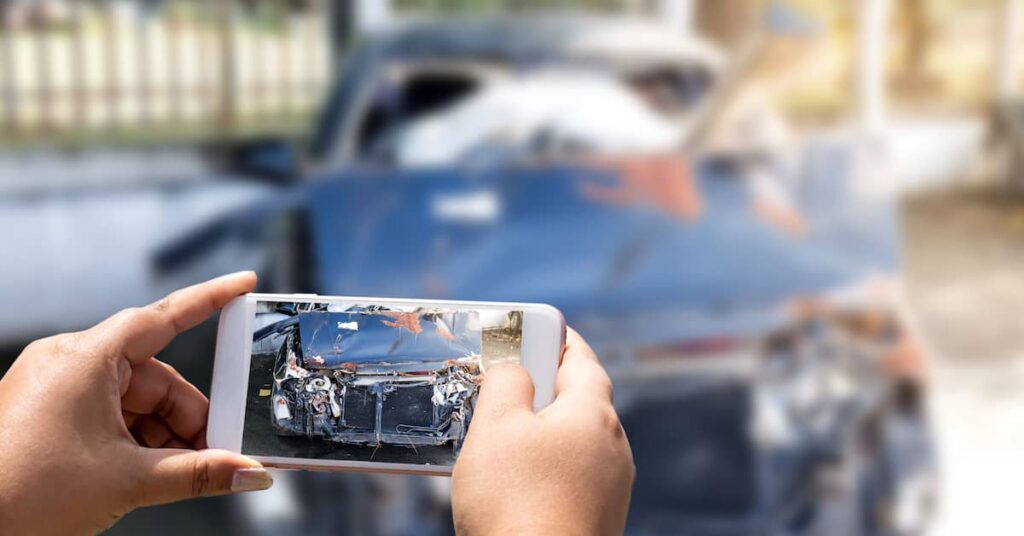
7. Speak to Witnesses
Eyewitness testimony can provide additional support for your car accident claim. Ask bystanders what they saw and get their names and contact information so you and/or your lawyer can reach out to them as needed.
8. See a Doctor
If you were not transported via ambulance following the accident, it is critical to seek out medical attention on your own. Your injuries need to be assessed by your doctor, at an urgent care clinic, or in the E.R. as soon as possible—ideally right after you leave the scene.
9. Inform Your Insurance Company of the Accident
Generally, car insurance companies require that accidents be reported within 30 days. Although the other driver’s insurance may be responsible for most if not all of your damages, it is still important to notify your insurance carrier that you have been in an accident to retain your right to coverage.
10. Report the Accident to the Police
If you did not call the police at the scene or you are unsure if law enforcement responded to the accident, you may need to report the accident yourself. Each state and even some communities have different procedures for reporting a crash.
11. Speak to a Car Accident Lawyer ASAP
Consulting an attorney is probably one of the last things on your mind after a car accident. You are likely more focused on recovering from your injuries, trying to figure out how to pay your bills, and thinking about how and when your life might return to normal.
What you may not realize is that entrusting your case to a nationally recognized car accident lawyer will reduce your stress, not add to it. Once you hire an attorney, you can invest your time and energy into healing while your lawyer handles the challenges of your claim. These include collecting evidence, consulting expert witnesses, negotiating with the insurance company, and—if necessary—filing a lawsuit and preparing your case for trial.
Contact Our Car Accident Lawyers Today
Since our founding in 1976, Burg Simpson has built a reputation as a leading advocate for injured people. We combine local clout with national strength, pairing in-depth knowledge of the communities we serve and the local court systems with preeminent experience, skills, knowledge, and success as litigators throughout the United States.
We have obtained more than $2 billion in verdicts and settlements for our clients. Unlike many law firms, we never hesitate to go to trial if that is what it takes to win.
No two car accident cases are exactly alike. If you have been injured through no fault of your own or a loved one was hurt or killed by a careless driver, Burg Simpson can provide the support, guidance, and expertise you need to recover the full compensation you and your family deserve.
Get your FREE and confidential case evaluation with a car accident lawyer by calling 888-895-2080 today. Burg Simpson represents car accident victims nationwide from offices throughout the country.



